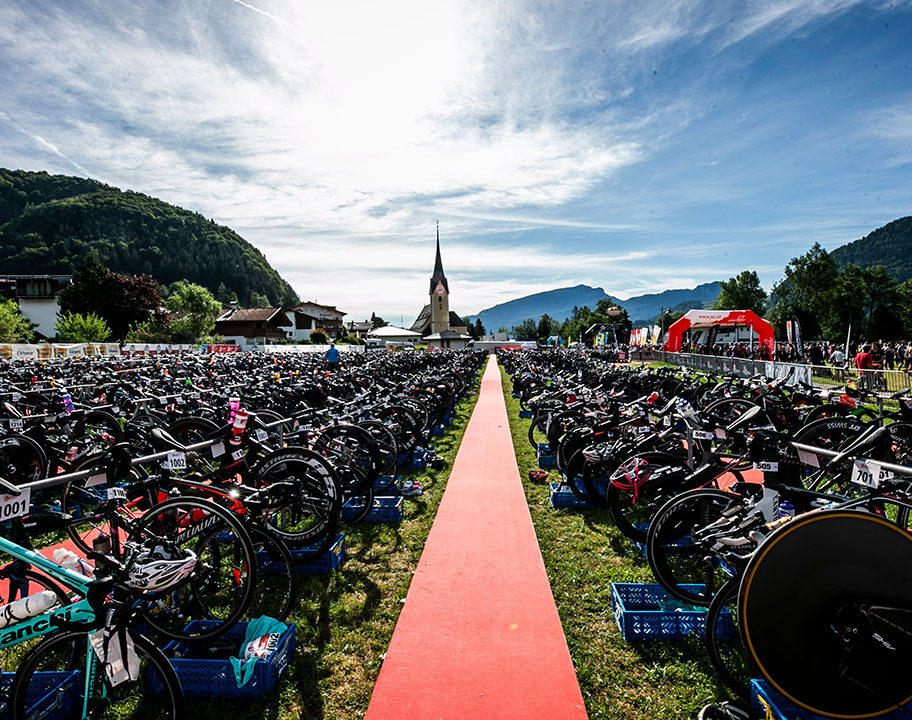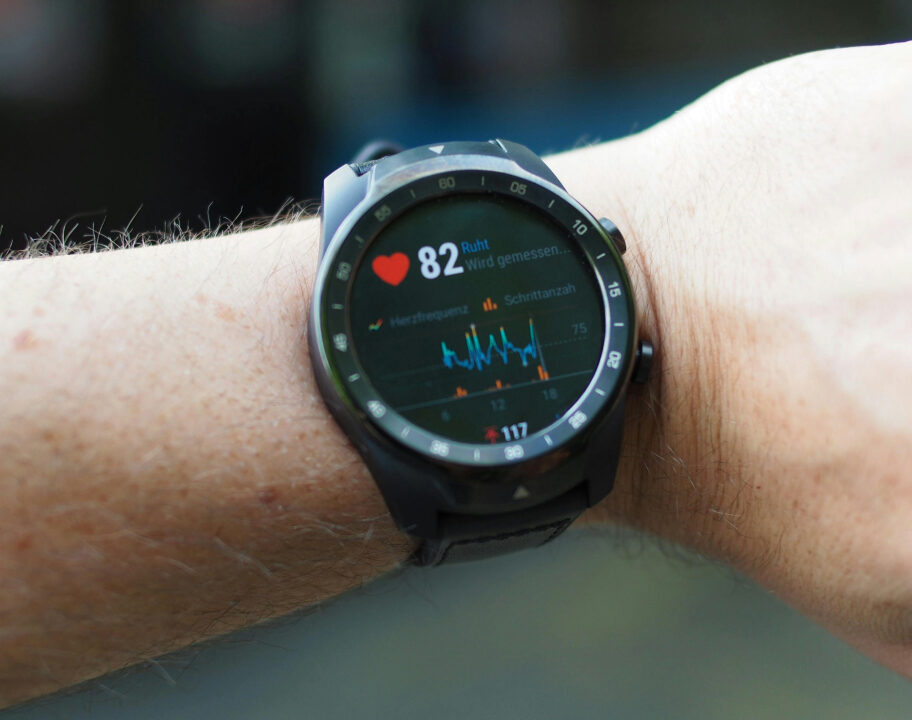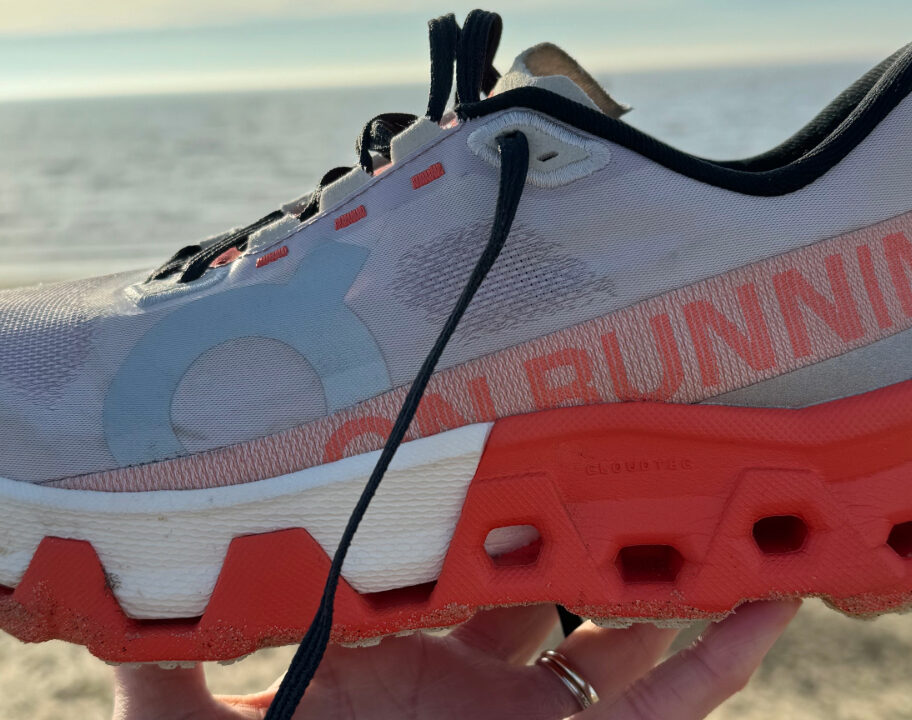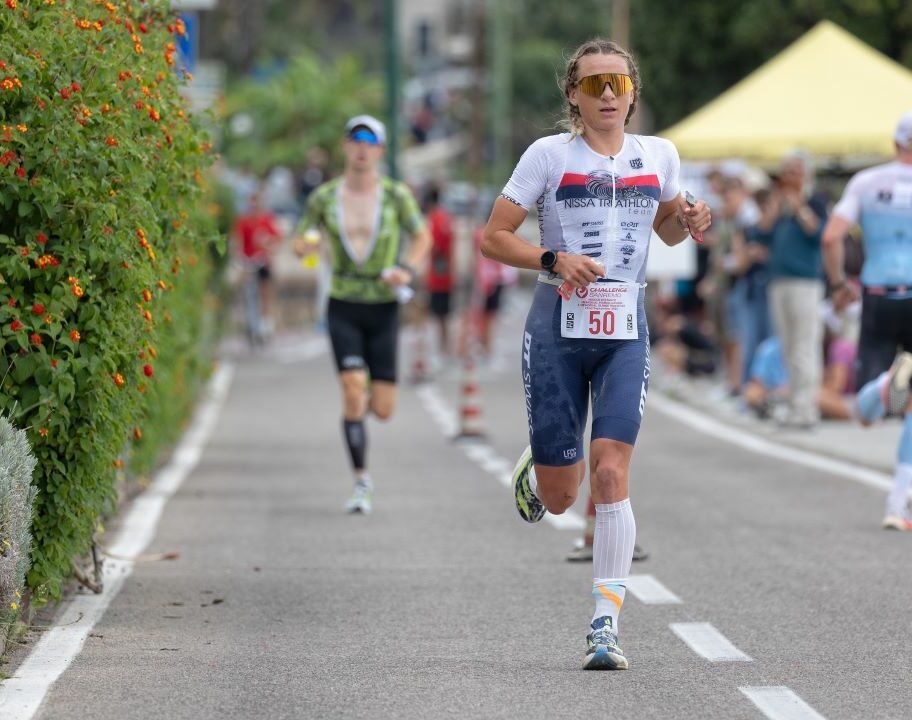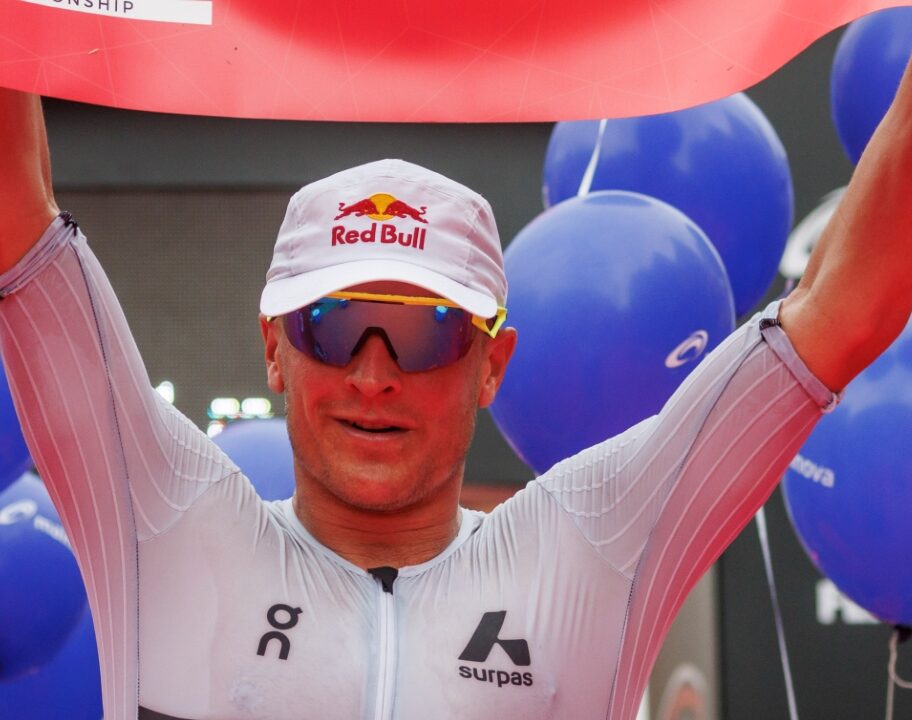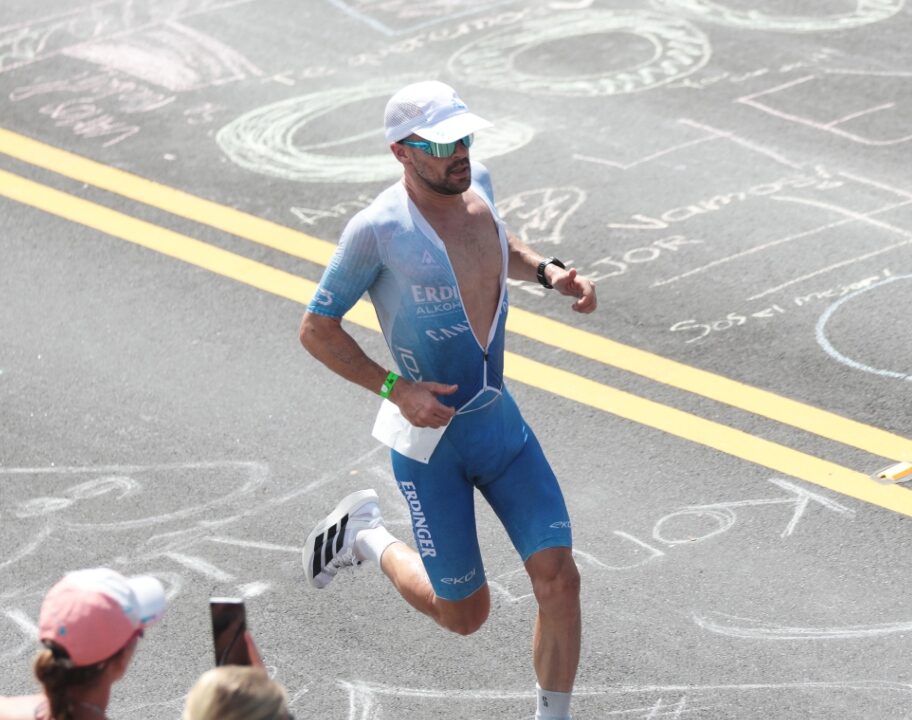Training for your first full Ironman distance triathlon is an epic journey of grit and determination. Long training hours to tick off, self-doubt to overcome, and dreams of that finish line feeling helping to motivate you through it all. But alongside guts and glory, the journey to the finish line of your first Ironman is going to require a fair amount of kit. From the gear to get you through those countless training hours. To the stuff you’ll want on race day to help you perform to your potential. Once you start looking into it, there’s so much gear you can buy, it starts to feel a little overwhelming trying to figure out what you actually need.
In our Ironman gear guide, five-time Ironman distance finisher Jenny Lucas-Hill gives you her take on the race day essentials and the added extras (that are actually worth it) to get you to the finish line.
Note: When you purchase through some links on our site, we may earn a small affiliate commission
Essential gear for racing an Ironman
If you’re training for your first Ironman, it’s likely that you’ve already got a shorter distance triathlon or two ticked off. So you might already have most of the gear you need for race day. But if you’re in the market for new kit (who doesn’t love new kit day!) or you just want to make sure your existing gear is going to be comfortable and functional enough to get you through. Here’s the essentials to get you to the finish line.
Long distance-specific tri suit
Your tri suit is going to be the star of the show, so it’s well worth investing in the comfiest suit you can find. I’d recommend going for a sleeved option, rather than sleeveless. It’s more aerodynamic, which will save you time and energy on the bike. Plus the sleeves will provide more coverage from the sun – an important consideration when you’ll be out there for anywhere between 10-16 hours!
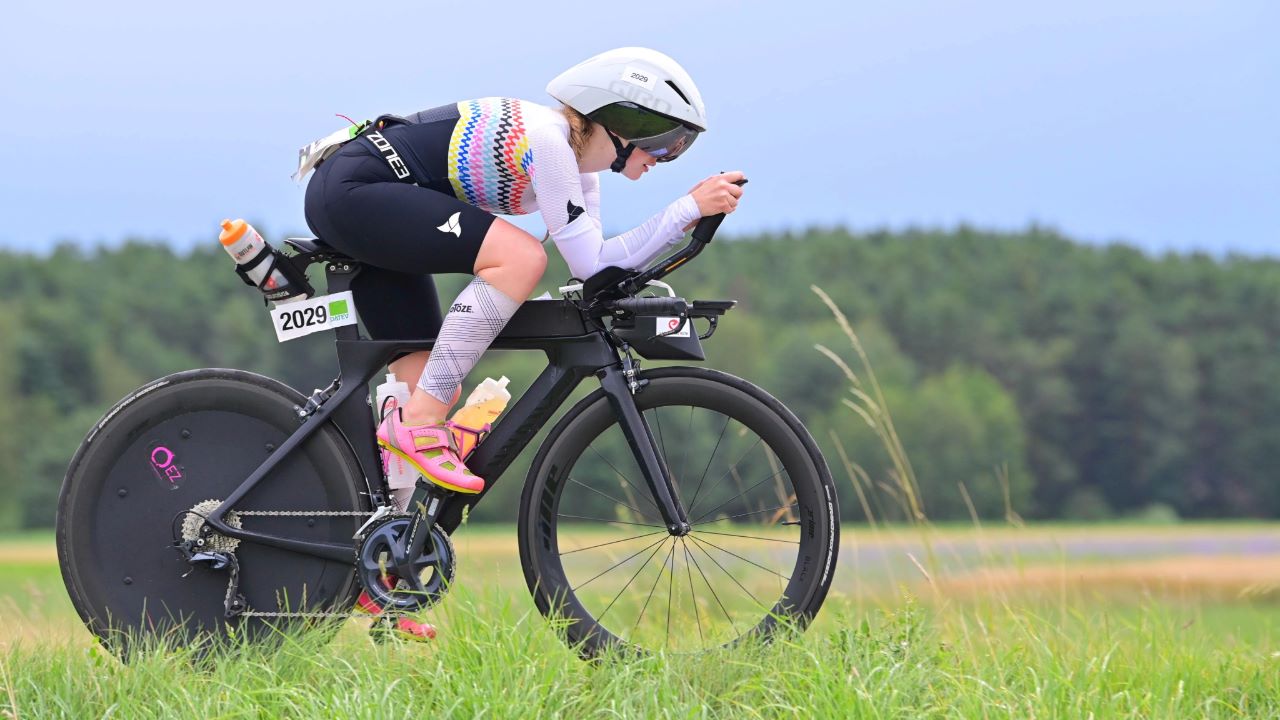
Make sure your tri suit of choice has a long distance-specific chamois pad to keep you comfortable on the bike. I also like tri suits that have multiple pockets to make it easier to carry all your race day nutrition. I’d imagine you’ve already been using a race belt for your bib number, but you can also consider getting one with an extra zipped pocket for nutrition which can be handy for racing the Ironman distance.
I’d highly recommend the TRI-FIT EVO 2.3 tri suit – which I’ve well and truly put through its paces, using it for Challenge Roth and IRONMAN Tallinn. You can read my full review here.
Wetsuit – flexibility is key
The longer swim distance in an Ironman means it’s very likely that your swim on race day will be wetsuit legal (unless you’ve entered a race someplace very warm) as the temperature threshold for a non-wetsuit swim is a little higher once you step up to the Iron distance.
It’s important to find a wetsuit that suits your swim style. If you struggle with sinking legs, a high buoyancy option, like the ZONE3 Vanquish X, will help you to conserve energy. Meanwhile if your legs tend to naturally stay fairly high in the water, you might want to consider a neutral buoyancy suit like the Zoggs Hypex Pro which will give you a more natural feeling in the water and won’t put pressure on your lower back.
Beyond the buoyancy profile, the key consideration when you’re choosing a wetsuit for Ironman racing is the flexibility around the shoulders. You don’t want any unnecessary restriction putting additional fatigue into your shoulders because A) 3.8km is quite a long way to swim. And B) you’ve still got to hold your aero position on the bike for 112 miles afterwards.
Goggles – prioritise comfort and visibility
Don’t let bad goggles de-rail your race before it’s even started. Test out multiple pairs in training to find your holy grail. You want goggles that don’t leak, don’t fog, sit comfortably on your face and give you a good field of vision to help you sight and stay on course when the swim (inevitably) gets congested and chaotic during your race.
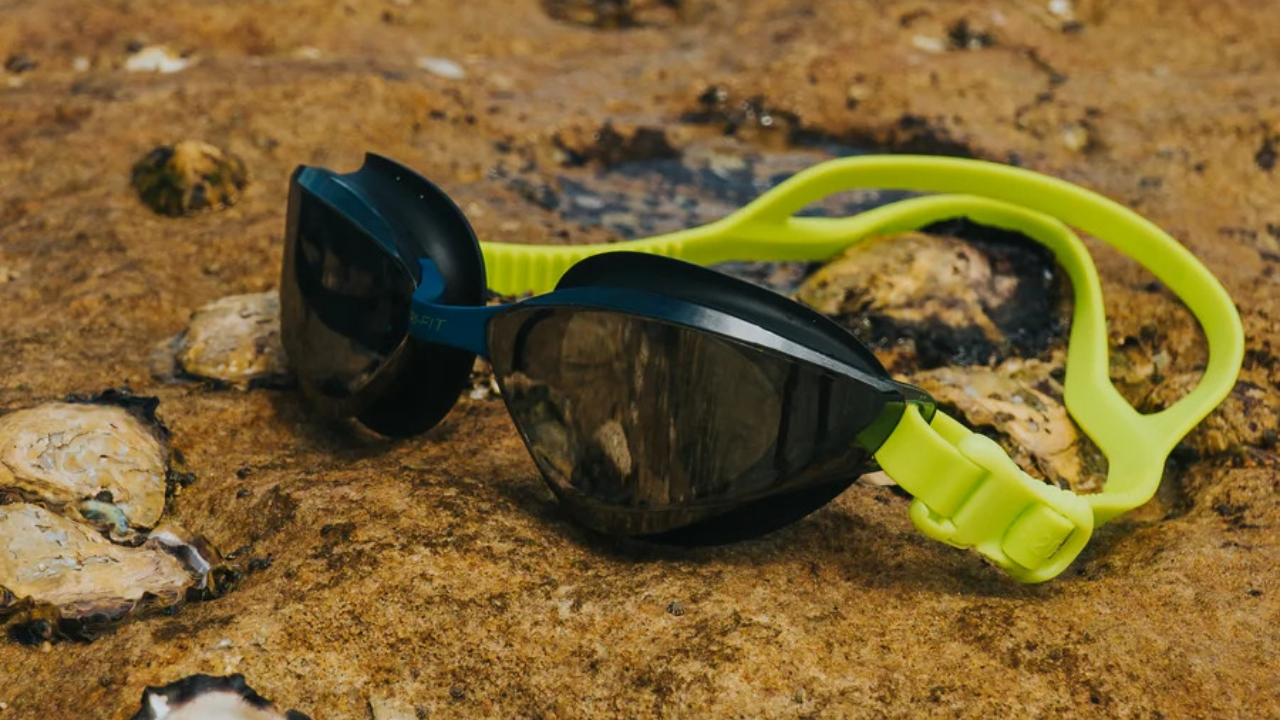
I’ve tested out the TRI-FIT RAPID-X goggles in multiple race scenarios and they performed exceptionally – though the latest release the VOLT – so far have been even better.
Tri shoes / triathlon cycling shoes
Ok so technically not essential – you can, of course, just wear regular cycling shoes for the bike leg in an Ironman. But stick with me on this one. Because even if you’re not planning to leave your shoes clipped to your pedals in transition to do a flying mount, or a push mount (though you will save quite a lot of time if you don’t have to run in your cleats – Ironman transitions are notoriously long!). Tri shoes are designed for ‘easy entry’ so you’ll still get them on faster in transition. Plus, wearing tri shoes also has the benefit of giving your feet a little more breathing space. Particularly in warm conditions, you’ll be amazed at how much your feet can swell while you’re riding in an Ironman. Which, in tight cycling shoes, can quickly lead to hot spots and pressure points. Tri shoes tend to be made with this in mind, offering better breathability and adjustability on the go.
Aero cycling helmet
If you can justify the cost, I’d recommend considering a full aero time trial style helmet (more on why that is later). But if you can’t quite face riding around looking like a storm trooper, it’s worth considering upgrading your lid to an aero road helmet which will still give you some watt savings. When you’ve got 112 miles to cover on two wheels, anything that will help you to ride faster for less effort is going to be worth your while.
Tech: heart rate monitor, bike computer and a multisport watch
Obviously you’re going to want the bragging rights of being able to upload your Ironman swim, bike and run to Strava (extra kudos if you just leave the Ironman marathon titled a casual ‘Afternoon run’). But more importantly, I’d recommend having both a bike computer and a multisport watch recording your activity as a way to manage your pacing and effort. Beyond mechanicals or GI issues, I think the major thing that derails most people’s races over the full distance is badly executed pacing. Being able to race strong all the way through 140.6 miles is all about holding steady at a sustainable effort. Go into the red in the first 10km of the bike and you’re going to be crawling the marathon later in the day.
So how do you do that? I prefer to use heart rate and power in tandem. But as a bare minimum, get a heart rate monitor, know your zones and do some testing in training so you have a target to stick to for the bike and the run. Connect this with your bike computer so it’s right there in front of you on the bike. I also put custom alerts on my bike computer to remind me to take nutrition and hydration at set intervals. A multisport watch will give you a running total of how much time you’ve been out on the course if you start it when you get into the water. This is useful for keeping an eye on your progress versus the cut off times. Or motivating yourself to push on in the latter stages of the race if you’re targeting a specific finish time. You can also use a multisport watch to manage your effort on the run using pace and heart rate.
Get a cap for the run
Running shoes (my take on whether super shoes are worth it later in this article) and sunglasses are fairly standard essentials for the run in a triathlon. But for Ironman distance racing I’d recommend having a running cap in your transition bag too. If it’s hot and sunny, it’ll keep the sun off your face (and your scalp if you’re wearing Lucy Charles-Barclay inspired ‘battle braids’). And you can also use it as part of your cooling strategy by dunking it in cold water and filling it with ice/sponges at the aid stations. If it’s raining, the peak is also useful for keeping the rain out of your eyes.
Anti-chafe and sport-specific sunscreen
Anti-chafe lotion/lube is your new best friend when you race the Ironman distance. Use it, and use it in abundance. Think armpits, belly button – if you’re wearing a one-piece tri suit, this will stop the zip rubbing. Sports bra strap/heart rate strap as well as the usual chamois creme application areas, and the back of your neck to avoid any wetsuit rub.
Sport-specific sunscreen is a must, too. You’re going to be out there for a long time, so you need to take care of your skin. Apply an all-day sunscreen (like Pelotan) a few hours before the race. Have an extra spray or roll on sunscreen in your transition bag so you can quickly top up mid-race. I forgot to do this at my second Ironman – IRONMAN Zurich – which happened to take place during a huge heat wave, and I had huge regrets. I’m Casper the ghost levels of pale, so with my sunburned arms and legs, I resembled a Drumstick Squashie sweet for a solid month or two afterwards. Learn from my mistakes and in the words of Baz Luhrmann – wear sunscreen.
Added extras – the non-essential ‘nice to have’ Ironman gear that will help you optimise your performance
So those are the essentials I’d recommend to help you get to the finish line of your first Ironman as comfortably as you can when you’ve got 140.6 mile of swimming, cycling and running to contend with. But there’s plenty of other kit out there that you can buy. Here’s the non-essential but actually quite useful extras that I’ve added to my transition bag over the years.
TT helmet
Honestly? I was sceptical whether wearing a TT helmet was actually making that much of a difference. But then I got to spend the day aero testing with the team at Body Rocket, and I was shocked at how much of a difference there was between my TT helmet and my aero road helmet.

Once we’d reduced my CdA with a few position changes, switching from my Specialized S-Works Evade 3 to the Giro Aerohead saved me over 3 and a half minutes over the 180km distance without having to ride any harder. That might not sound like much, but to put it into context at my last Ironman I got the last automatic Kona qualifying slot and I was less than 3 minutes ahead of the athlete behind me.
Power metre
Having a power metre on my bike was a game changer for being able to get really specific with my training and my pacing on race day. Generally, I’ll have a target race power to ride to and I’ll use my heart rate to sense check it. If conditions are hotter than expected and hitting my target power is sending my heart rate too high, then I know I need to adjust to the lower end of the target range to avoid overcooking it. Having the two data points in tandem is really helpful to race at the right intensity to make sure you can get to the finish line without blowing up. Power data is even more helpful on hilly courses because you can have an upper limit for the climbs to keep yourself in check. Naturally, I completely ignored this when I was riding up Solar Hill at Challenge Roth which made the hills in the latter stages of the marathon course quite painful!
Hydration system
My trusty bike is getting on a bit now, which means it didn’t come with an integrated hydration system like so many of the TT bikes have these days. But I got a Stealth Parts hydration system for the 2024 race season and it made a huge difference. Not only because I could carry more fluids with me which reduced the need to slow down and grab bottles at aid stations. But also because it meant I could get hydration on board without having to come out of my aero bars. There’s been some rule changes recently around how much volume you can carry in front and rear-mounted hydration systems, so check carefully before you purchase anything.
Disc wheel/disc cover
A disc wheel essentially acts like a sail on the back of your bike. When the wind catches it at the right angle it feels like you’re being pushed along. A proper disc wheel hasn’t been in my budget, but I got one of the EZ disc covers and after a couple of seasons of time trials and triathlons, I feel like it does make a significant difference that negates the added weight. And as the experts at Parcours highlighted in our piece on riding in windy conditions – a disc wheel on the back can actually help to improve stability on the bike.
Running shoes – are carbon plated “super shoes” worth it?
It’s fairly obvious that you’re going to need some running shoes to take on the final leg of your Ironman triathlon. I’ve raced this distance in regular running shoes, and carbon super shoes. And now I’d always pick my carbons. Yes, they’re expensive. But even if you’re not going to be giving Patrick Lange or Anne Haug a run for their money out on the race course, the extra energy return is still evident at slower speeds. Trust me, you’ll want every bit of extra bounce you can get when you head out of T2 to run a marathon after 112 miles on the bike.
An unsung hero: How a plastic sandwich bag can help you take minutes off your Ironman finish time
And finally, a moment for the least exciting, least glamorous but potentially one of the most cost effective timesaving purchases you can make to speed up your Ironman transitions: the humble sandwich bag. You have to take so much nutrition during an Ironman, that it’s pretty much impossible to carry it all at once. Which means most people have to refill their pockets for the run in T2.
I used to waste a lot of time stood still in transition, fishing gels out of the depths of my transition bag and putting them in my pockets before I could start running. But for my last two races, I put all of my run nutrition into one zip-loc style sandwich bag. Once I got into T2, all I had to do (once I’d ditched my bike helmet and put my running shoes on) was grab this bag and head out. I then used the first couple hundred metres of the run to dispense my gels into my tri suit pockets while running (practice this at home so you don’t drop any). And then disposed of the bag at the next aid station. There are some compostable options out there which still have the zip top to make this little timesaving hack a bit eco-friendlier.
It’s another one of those things that only saves you a couple of minutes at most. But once all those small gains add up, you can actually take quite a lot of time off your overall Ironman finish time without having to race any harder.
Related content
Head to our Gear section for more triathlon gear guides and reviews

